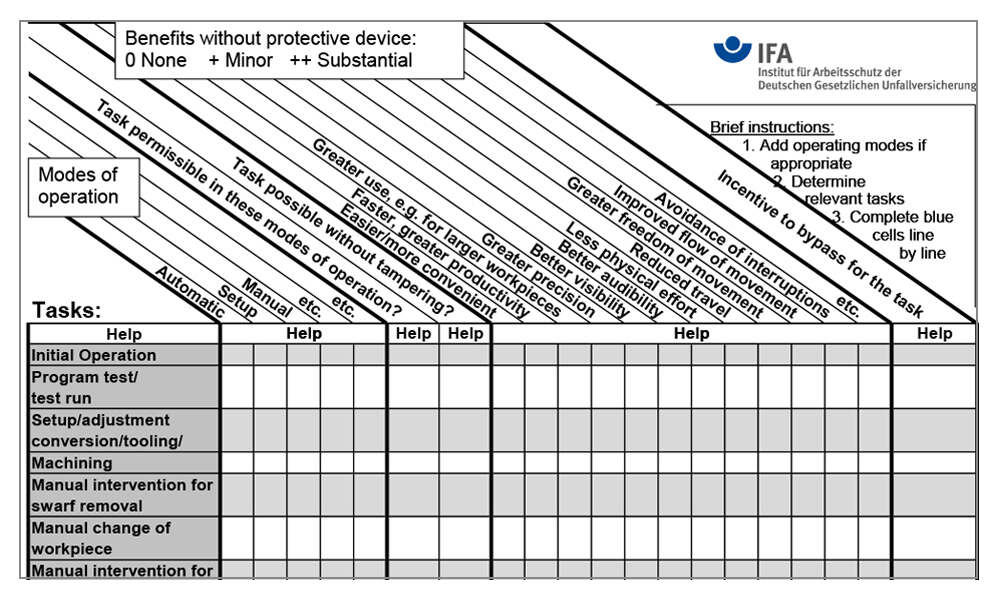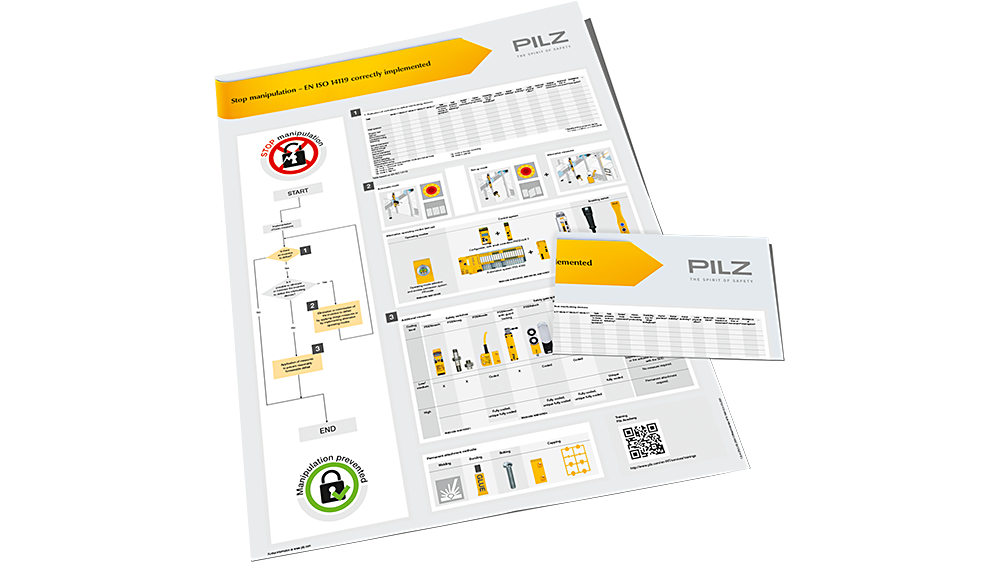If safeguards are manipulated, serious accidents or damage to machinery may result; the legal and financial risks are difficult to calculate. Find out more about how to identify the causes and avoid manipulations.
Protection against manipulation
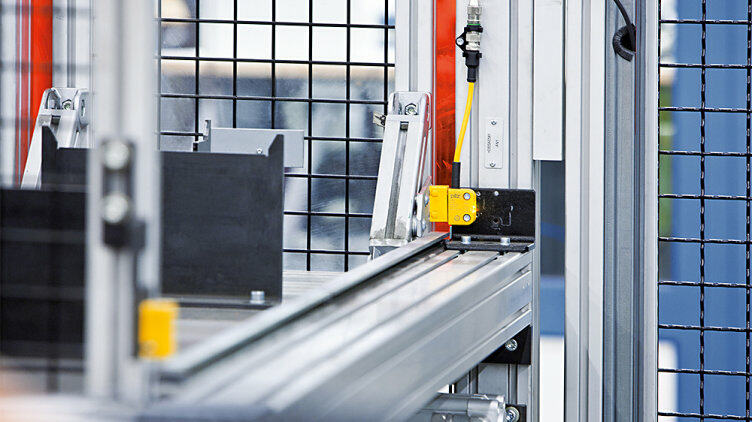
Why are plant and machinery manipulated?
It is not uncommon for safeguards on machinery to be manipulated by users. Movable guards and mechanical fixed guards are the most commonly affected.
There are many reasons why machine operators and users manipulate them, putting their colleagues at risk. The ability to work faster, convenience, time and performance pressure, poor ergonomics or simplification of operating modes are all possible motives. Accidents are the result – ranging from minor injuries to fatalities.
The incentives for manipulation must be removed!
As an automation expert and manufacturer of safeguards, it is our objective to protect man, environment and assets. However, this is only possible if machinery is used in accordance with its intended purpose and safeguards are not manipulated.
How can we counteract manipulations?
First of all it's necessary to identify the incentive for manipulation. Machinery that is not user-friendly is one incentive. The assessment scheme published by IFA (Institute for occupational health and safety of German statutory accident insurance) can be used as a guide for calculating the incentive for manipulation. It systematically shows potential weaknesses, plus options for rectifying these weaknesses.
Assessment scheme for establishing the incentive for manipulation
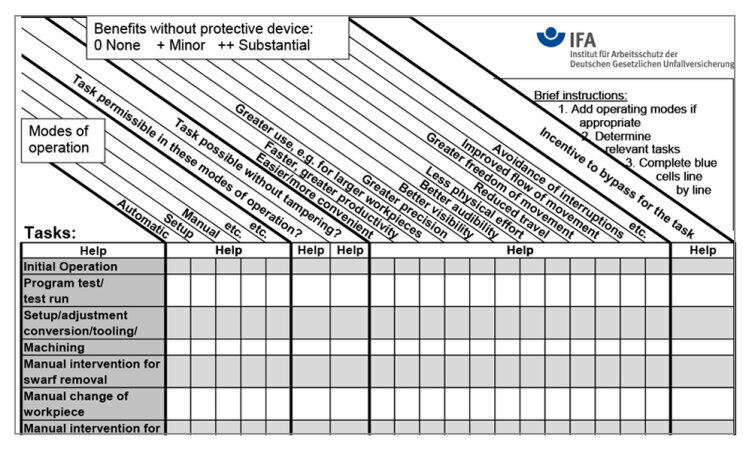
Machine manufacturers and operators are liable for the consequences of manipulations
It is generally recommended that the protection concept is designed simultaneously with the machine development. This includes:
- Define needs in the requirement manual
- Develop protection concept and machine function in parallel
- Establish the incentive for manipulation
- Optimise protection concept
- Review the effectiveness of reducing the incentive for manipulation
Establish all the machine's operating modes in the planning phase of a machine’s design and develop appropriate protection concepts. Requested changes can be accommodated at this early stage with little effort.
Where machinery is already in circulation, you should produce a situation description and cause analysis at regular intervals. Both sales and maintenance personnel can assess whether there is an incentive for manipulation or if a safeguard has actually been manipulated already.
If manipulation is identified, the motives must first be established and the safety concept improved. Simply exchange safeguards that perform the same function (e.g. swap a safety gate for a light grid if this is more appropriate). Drive controllers with integrated safety functions can also be installed.
Both the machine operator and the machine manufacturer are required to prevent the manipulation of safeguards. There are legal principles that regulate responsibilities and liability for the whole of a machine's lifecycle.
In Europe, manipulation of safeguards is explicitly prohibited and punishable by law. The manufacturer is liable for production and manufacturing defects as well as instruction errors; the operator is liable for any potential personal injury.
We would be happy to advise you on how to avoid manipulation of safeguards on plant and machinery. Our services range from risk assessment through to the declaration of conformity.
Further information:
Stop manipulation – EN ISO 14119 correctly implemented
EN ISO 14119 describes the normative basic principles for interlocking devices associated with guards. The standard covers measures designed to prevent the defeat of safeguards and their interlocking devices - a forbidden but still frequent practice. All phases of the machine’s lifecycle must be considered when selecting the appropriate interlocking device, with or without guard locking (in accordance with EN ISO 12100). Whether in automatic mode, set-up mode or alternative operating modes, it’s necessary to prevent manipulation on all protective measures. The updated poster contains information on how to stop manipulation. Everything you need to know is presented there in a clear format.
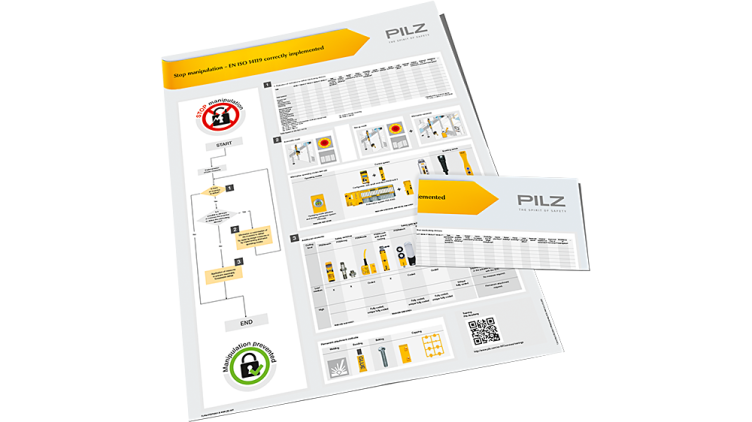
Pilz Taiwan Ltd.
10F, No.36, Sec.3, Bade Rd., Songshan Dist.
Taipei City 105608
Taiwan
Telephone: +886 2 25700068
E-Mail: info@pilz.tw
Telephone: +886 2 25700068
E-Mail: info@pilz.tw
